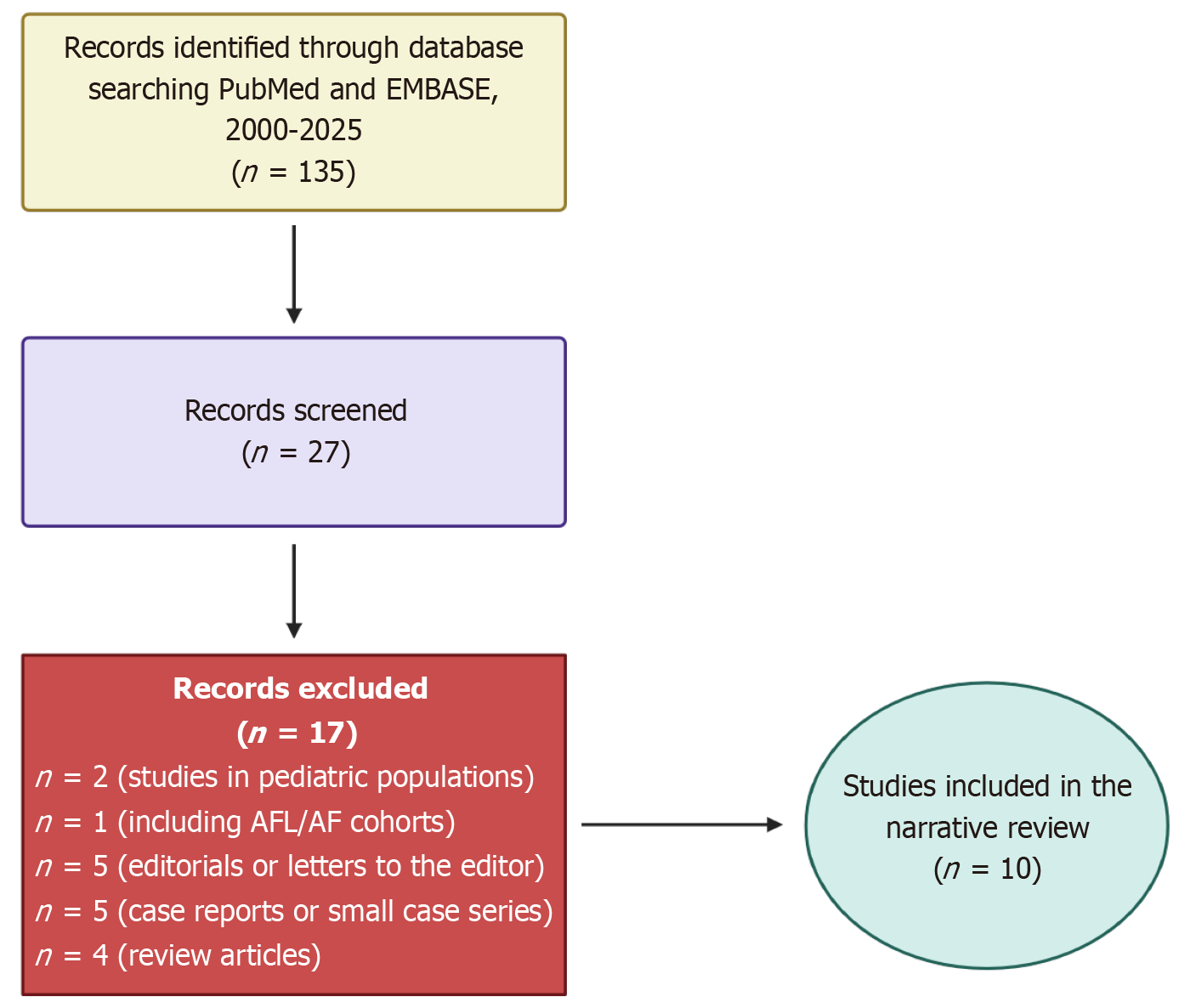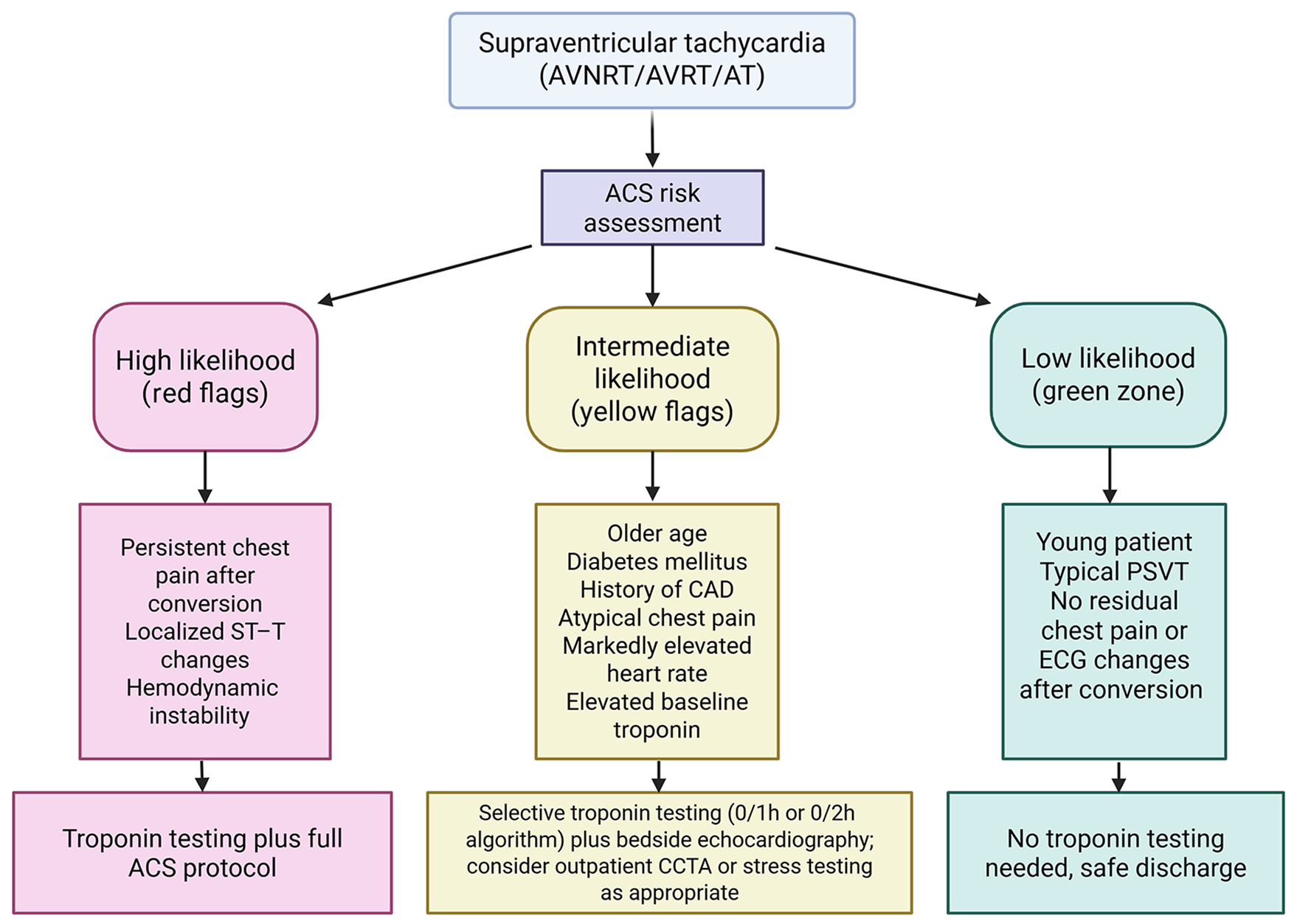Copyright
©The Author(s) 2025.
World J Cardiol. Nov 26, 2025; 17(11): 113411
Published online Nov 26, 2025. doi: 10.4330/wjc.v17.i11.113411
Published online Nov 26, 2025. doi: 10.4330/wjc.v17.i11.113411
Figure 1 Flow diagram of study selection for the narrative review.
A total of 135 records were identified through database searching (PubMed and EMBASE, 2000-2025). After screening of 27 records, 17 were excluded (2 pediatric studies, 1 including atrial fibrillation/flutter populations, 5 editorials/Letters to the editor, 5 case reports or small case series, and 4 review articles). Ten studies met the eligibility criteria and were included in the final narrative synthesis. AFL/AF: Atrial fibrillation/flutter.
Figure 2 Proposed mechanisms of troponin elevation in supraventricular tachycardia.
1Absence of chest pain or concerning symptoms, no significant ischemic changes on electrocardiogram beyond rate-related alterations, and minimal cardiovascular risk factors. HR: Heart rate.
Figure 3 Emergency department algorithm for troponin testing and subsequent management in patients presenting with paroxysmal supraventricular tachycardia.
ACS: Acute coronary syndrome; AT: Atrial tachycardia; AVNRT: Atrioventricular nodal re-entrant tachycardia; AVRT: Atrioventricular re-entrant tachycardia; CAD: Coronary artery disease; CCTA: Coronary computed tomography angiography; ECG: Electrocardiogram; PSVT: Paroxysmal supraventricular tachycardia.
- Citation: Özlek B, Tanık VO, Barutçu S. Troponin elevation in supraventricular tachycardia: A narrative review. World J Cardiol 2025; 17(11): 113411
- URL: https://www.wjgnet.com/1949-8462/full/v17/i11/113411.htm
- DOI: https://dx.doi.org/10.4330/wjc.v17.i11.113411















